Calamus in the Study: Classification, Identification and Appreciation of Common Calamus in the Market | 163

Calamus in the Study: Classification, Identification and Appreciation of Common Calamus in the Market
Huamujun

With the improvement of people's living standards, growing flowers and plants has become the best choice for many people after work or to cultivate their character; and with the return of traditional culture, many of the previous excellent traditions have regained their charm. Take plant culture as an example. In addition to the continuation and development of traditional bonsai culture, the elegant interest in flowers that was once loved by literati and poets has also rapidly emerged and become widely popular.
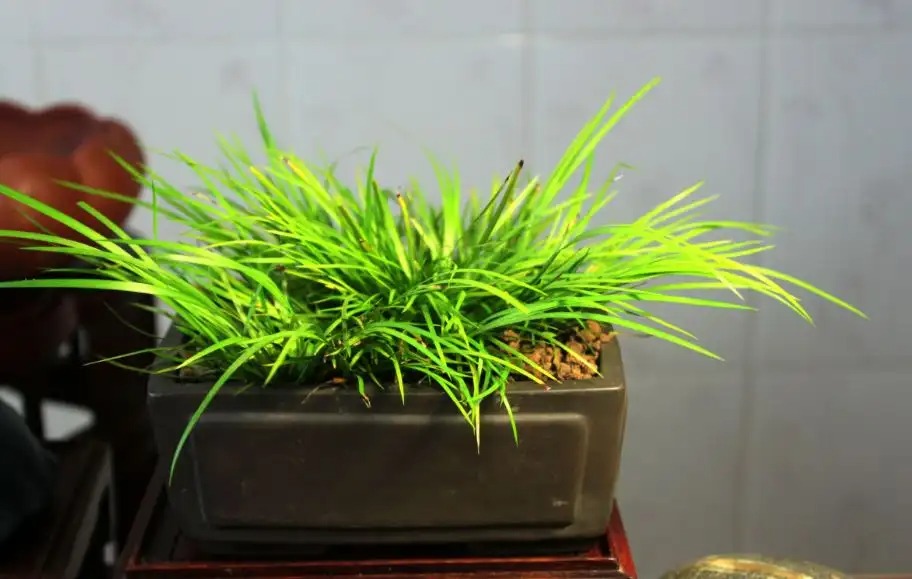
The "Four Elegant Flowers" favored by scholars are mainly orchid, chrysanthemum, daffodil and calamus. Among them, orchid ranks first for its graceful posture, quiet fragrance, tranquility, and elegance. Chrysanthemum and daffodil are seasonal flowers, autumn and spring flowers respectively, and cannot be viewed all year round. However, calamus, a wild grass, is green and full of vitality all year round, graceful, elegant and handsome, and is therefore deeply loved by scholars and writers. Since ancient times, there has been a custom of growing calamus in the study, which has been passed down to this day.
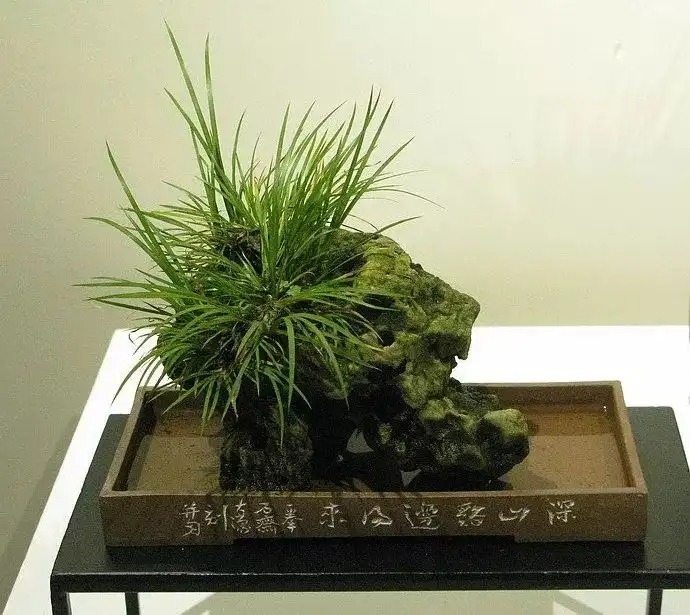
As the number of plant enthusiasts who grow calamus increased rapidly, various kinds of calamus appeared on the market, and plants with the word "calamus" in their names also became popular. As a result, there were a wide variety of calamus with various names, such as money, tiger whiskers, dragon whiskers, ox top, fragrant seedlings, Taiwan calamus, gold edge, gold leaf, silver edge, flower leaf, Jiji, Masamune, golden princess, velvet, Kibune moss, Arisugawa, stone calamus, flower stone calamus, nine-section calamus, gladiolus, mud calamus, flower calamus, water calamus, flower stone calamus...,
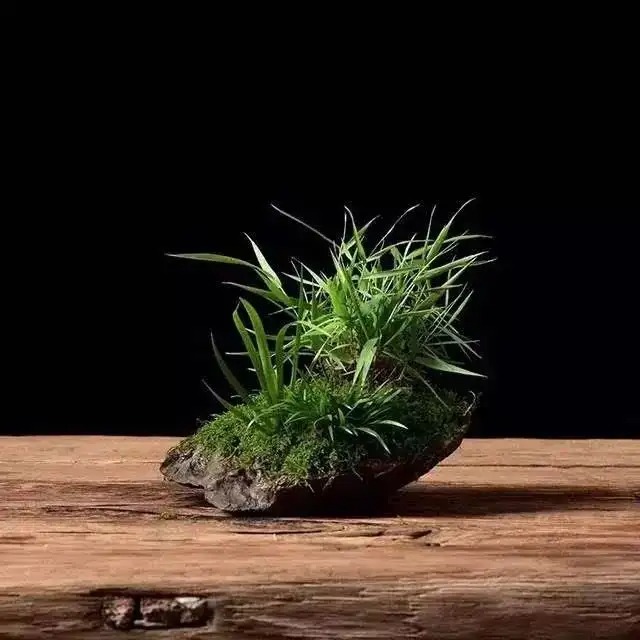
Since calamus was listed as a magical medicine for eliminating plague and prolonging life in the pre-Qin period, it is recorded in the "Shennong Bencao Jing": "The classics say: In the time of Yao, the essence of heaven fell into the courtyard and became leek, which was affected by the energy of all yin and became calamus, so it is called Yao leek. " Therefore, many plants were later attached with the word "calamus", so many plants with "calamus" are from different families, the most famous of which is "gladiolus", which is not the same plant as calamus, has nothing to do with the Tang Dynasty, and is not native to the country, but is a completely imported product.
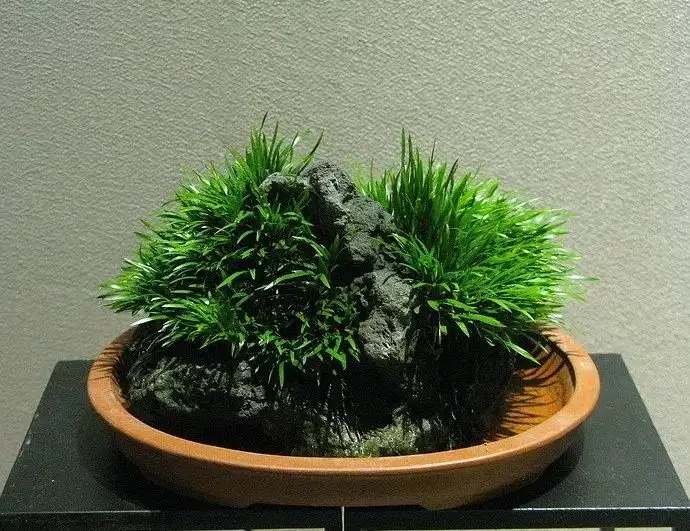
In addition, some self-media and articles aim to attract clicks and sell products, but they have only a superficial understanding of calamus and do not seek to fully understand it. Therefore, the introduction of calamus is often full of errors, or deliberately confusing, misattributing and misleading consumers. Therefore, it is necessary to systematically organize the information about calamus and clarify the ideas of calamus lovers.
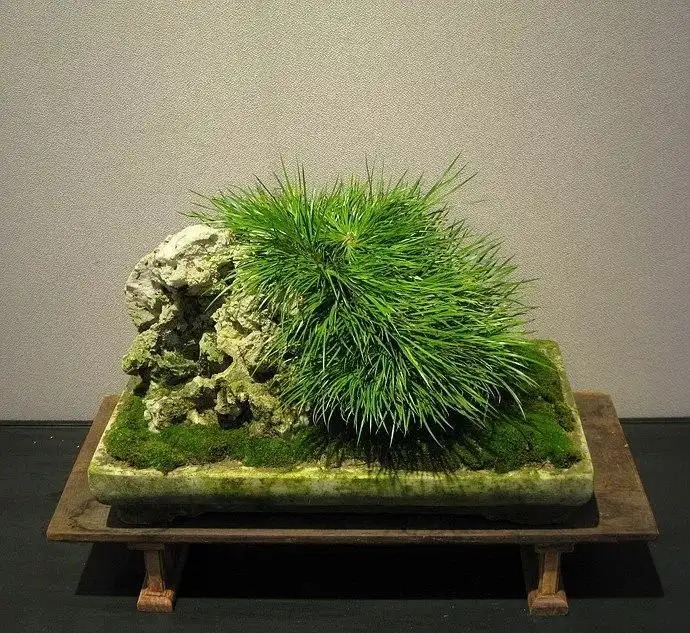
First of all, we should point out that the ancient records on the medicinal properties of calamus and most of the poems praising it, especially the calamus used in stationery, basically refer to the herbaceous plants of the Araceae family and the genus Acorus. There are 7 varieties and 2 variants in the genus Acorus, namely, stone calamus, water calamus (calamus), money calamus, long-bracted calamus, fennel calamus, broad-leaved calamus, scented calamus and 2 variants , fine-leaved calamus (water calamus variant) and golden-edged calamus (stone calamus variant) . We will use stone calamus and water calamus as representatives to introduce their general forms.
[Iris]
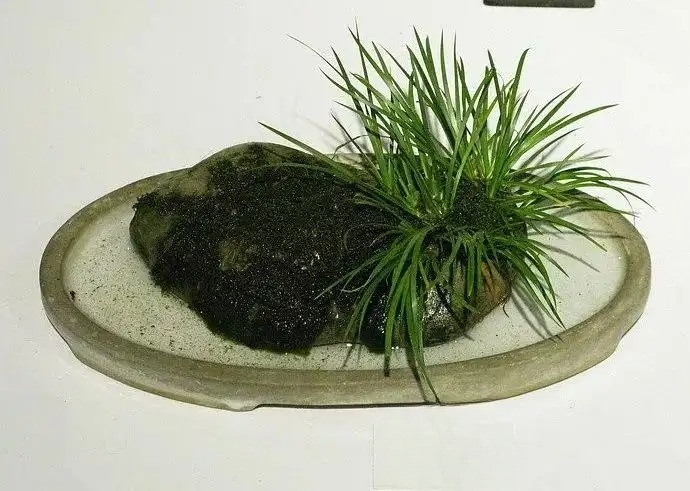
Acorus tatarinowii (scientific name: Acorus tatarinowii) is a grassy perennial herbaceous plant belonging to the Araceae family and the genus Acorus. Its rhizomes have an odor. The leaves are sword-shaped, entire, arranged in two rows, and raised upwards; the inflorescence stalk is axillary, 4-15 cm long, and triangular; the spadix (spadium) has green pedicels and white flowers ; the spathe is leaf-shaped and connected to the inflorescence stalk; the flowers are bisexual; there are many ovules; the berries are green when young, and yellow-green or yellow-white when mature; the flowering and fruiting period is February to June. It is distributed in both the north and the south, and grows in areas with an altitude of 20 to 2,600 meters. It is mostly grown in the gaps between water and rocks in mountain streams or between gravels in mountain streams (sometimes growing in water).
[Water iris]
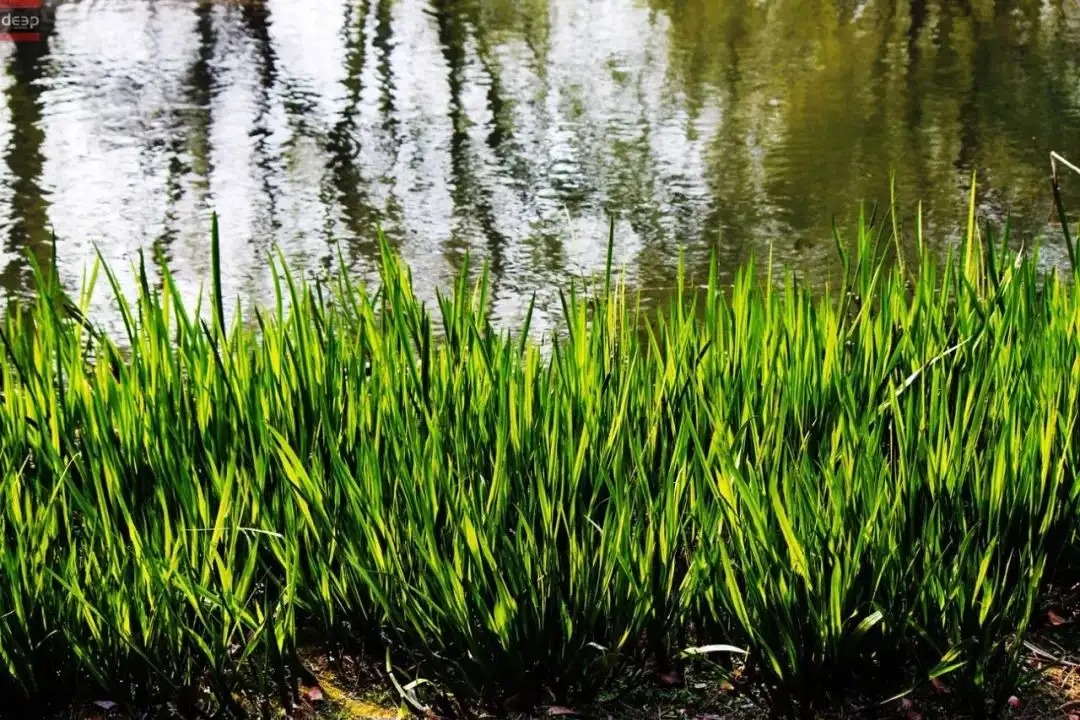
Acorus calamus (scientific name: Acorus calamus L.) is the common calamus, also known as mud calamus, wild calamus, stinking calamus, mountain calamus, white calamus, sword calamus, big calamus, etc., perennial herb. The rhizome is horizontal, slightly flat, branched, with yellow-brown skin, fragrant, many fleshy roots, 5-6 cm long, with hair-like fibrous roots. The leaves are basal, and the membranous leaf sheaths on both sides of the base gradually narrow upward, gradually disappearing and falling off at 1/3 of the leaf length. The leaves are sword-shaped linear, 90-150 cm long, 1-3 cm wide in the middle; the inflorescence stalk is triangular, 15-50 cm long; the leaf spathe is sword-shaped linear, 30-40 cm long; the spadix inflorescence is obliquely upward or nearly upright, narrowly conical cylindrical, the flowers are yellow-green , and the berries are oblong and red. The flowering period is from February to September. It is distributed in both the north and the south.
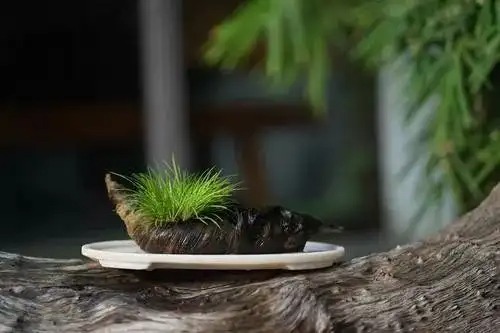
There are many names for the genus Acorus and many horticultural varieties. Among them, the two species that are generally used as medicine are Acorus calamus and Acorus calamus, and the others are rarely used as medicine; the three species that are generally used as stationery are Acorus calamus, Acorus moneyi and Acorus gold-edged. In addition, the six traditional calamus varieties: Jinqian, Niu Ding, Huxu, Jianji, Xiangmiao and Taipu are all plants of the genus Acorus, while others such as Huangjinji, Jiji, Jinbian, Jinye, Yinbian, Masamune, Kibune Moss, Arisugawa, etc. are all horticultural varieties of Acorus.
【Nine-section calamus】(traditional variety)
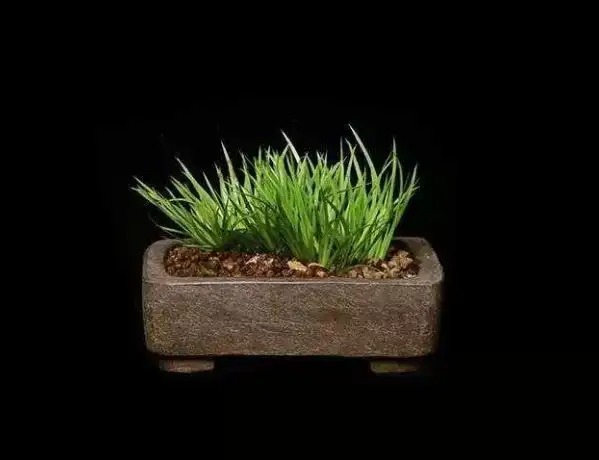
It should be noted here that a kind of calamus was often mentioned in ancient times, that is, the nine-jointed calamus, which was first recorded in "Shennong Bencao Jing" . Tao Hongjing said: "Shangluo County is in Liangzhou, and Yandao County is in Shu County. Now it is everywhere. It grows on stone chasms, and the joints are the best. In the wetlands below, the ones with big roots are called Changyang, which is not edible . "
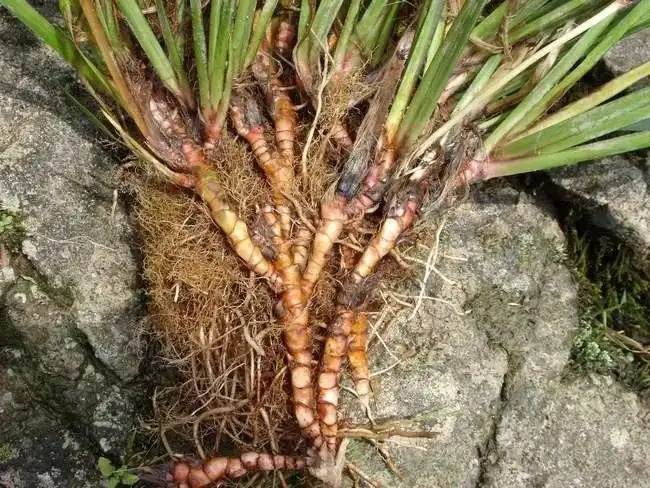
(For example, it is not the legendary nine-section calamus)
Before the Northern and Southern Dynasties, the medicinal use of calamus included two varieties: the large-rooted mud calamus (water calamus) and the thin-rooted stone calamus. The one growing in ponds and marshes according to Shennong's Herbal Classic is mud calamus. Leigong Paozhi Lun records: "Any one grown on the stone, with tender yellow roots, tight and hard joints, and one inch long with nine joints, is the real one ." In ancient times, it was believed that the roots with long roots and many joints were better, so there was a saying that "one inch with nine joints is the best" , and it was commonly called "nine-joint calamus".
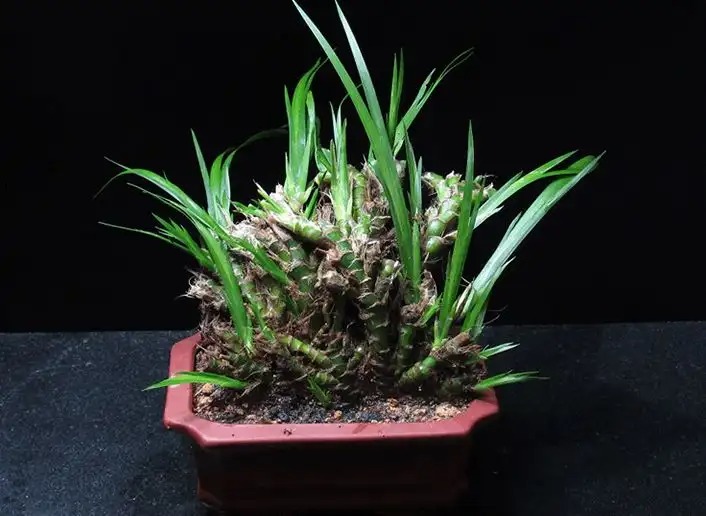
(Similar to the example)
Judging from ancient records, the nine-section calamus is definitely a variant of the stone calamus, representing the superior appearance characteristics of the stone calamus. Therefore, it is different from the "nine-section calamus" used as medicine today. The nine-section calamus used as medicine today mostly refers to the dried rhizome derived from the Ranunculaceae plant Anemone altaica Fisch. ex CA Mey.
【Nine-section Calamus】(Modern)
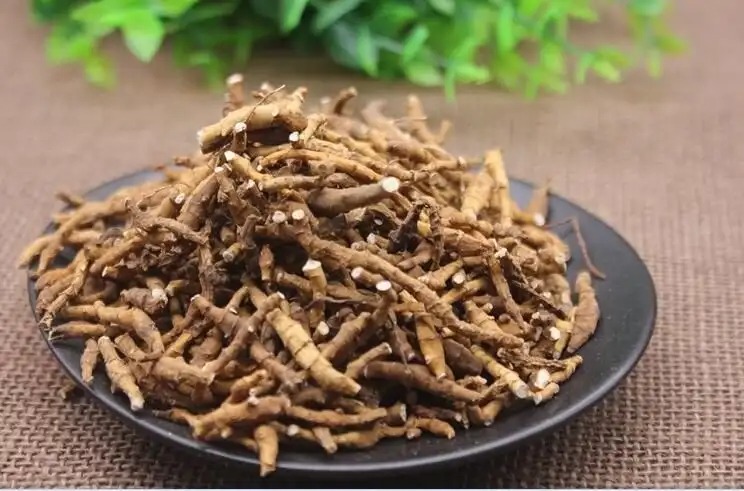
The nine-section calamus used for medicine now refers to the Altai anemone (Anemone altaica Fisch. ex CA Mey), also known as Scrophulariaceae and Scrophulariaceae , which is a perennial herbaceous plant of the Ranunculaceae family and the genus Anemone . The plant can reach 23 cm in height. The rhizome is horizontal or slightly oblique, the leaves are thin and herbaceous, broadly ovate, three-lobed, with teeth on the edges, nearly glabrous on both sides, and the petioles are glabrous. The scape is nearly glabrous; the bracts are stalked, the pedicels are pubescent, the sepals are white, obovate-oblong or oblong, with rounded apex and glabrous; the filaments are nearly filamentous; the achenes are ovoid and pubescent. It blooms from March to May. It is distributed in northwest Hubei, western Henan, southern Shaanxi, and southern Shanxi, and grows under forests in mountain valleys at an altitude of 1200-1800 meters, buried in bushes or ditches.
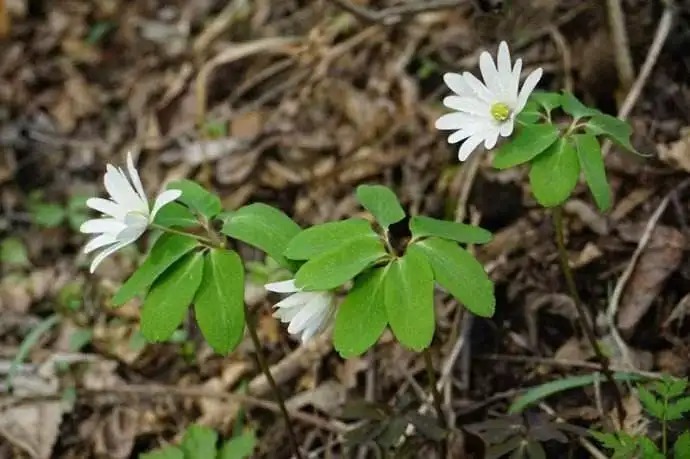
The rhizome of Altai Anemone is fusiform, slightly curved, 1-4cm long and 3-5mm in diameter. The surface is brownish yellow to dark brown, with many semi-circular protruding nodes, on which there are scale leaf scars, arranged obliquely and alternately, and 1-3 protruding root scars on the nodes. Because its rhizome is very similar to the nine-section calamus in ancient records, it was later borrowed from its name, but there was no record of it in the herbal books of all dynasties until it was included in the 1963 and 1977 editions of the Pharmacopoeia. It is now a local medicine in North China and Northwest China, and its trade name is "Nine-section calamus".
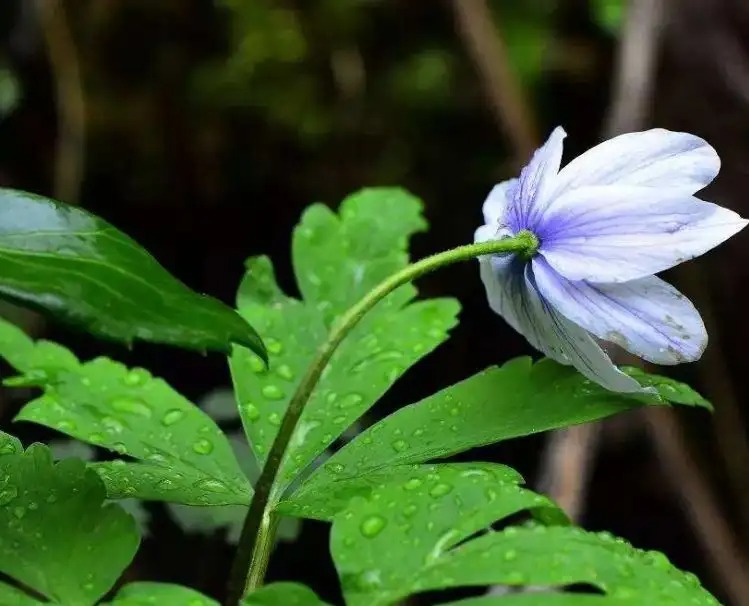
Altai Anemone
In addition to the Altai anemone and the nine-section calamus, there are other plants that are easily confused, such as several plants with the name of calamus in the Typhaceae, Poaceae and Iridaceae families. The most common ones are cattail, pampas grass, gladiolus, iris and garden calamus (yellow calamus). We will briefly introduce them below.
[Kagayaki]
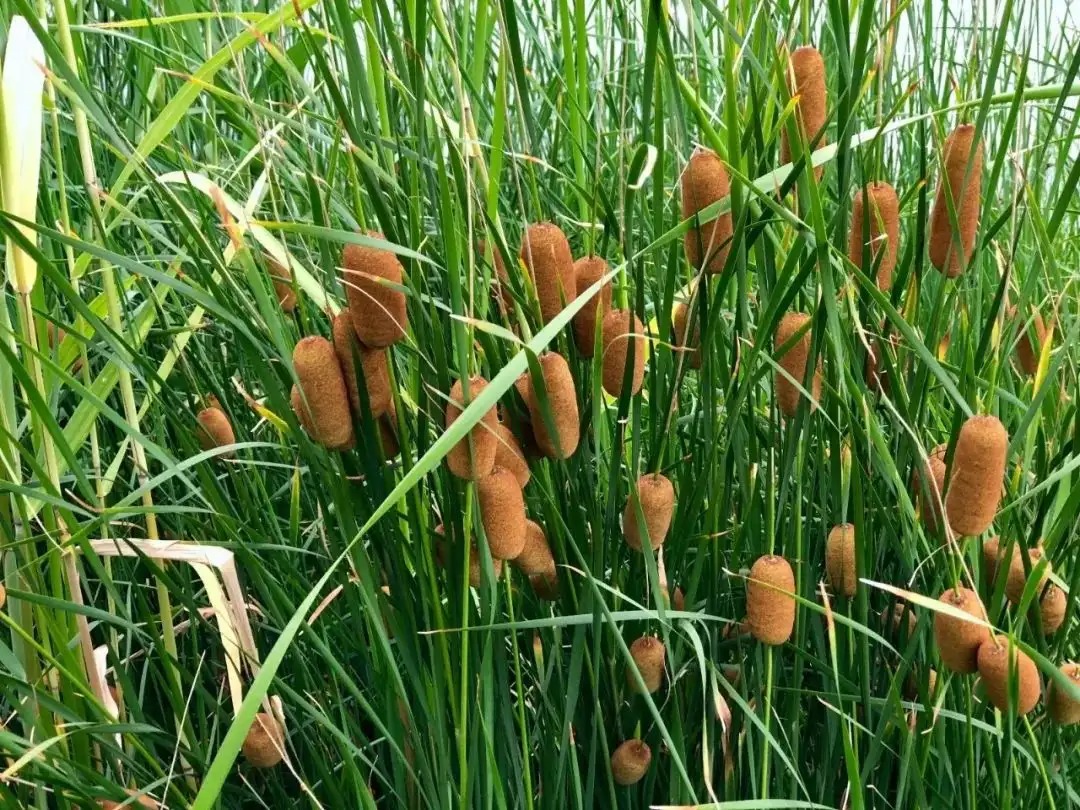
Cattail (scientific name: Typha orientalis Presl), also known as cattail , is a perennial aquatic or marsh herb of the Typhaceae family and the genus Typha . The rhizome is milky white, the aboveground stem is thick and gradually tapers upwards, the leaves are linear, the leaf sheaths embrace the stem, the male and female inflorescences are closely connected, and the fruit peel has long brown spots. The seeds are brown and slightly curved. The flowering and fruiting period is from May to August. Cattail grows in lakes, ponds, ditches, swamps and slow-flowing belts of rivers. It is distributed in most provinces.
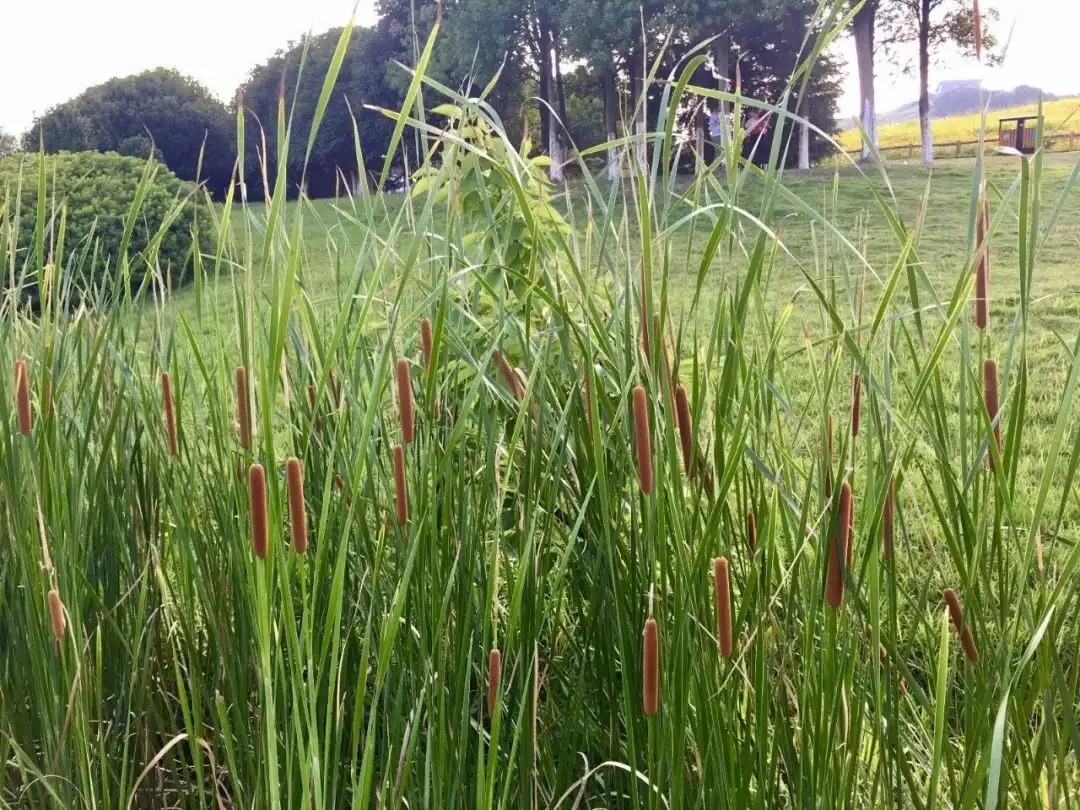
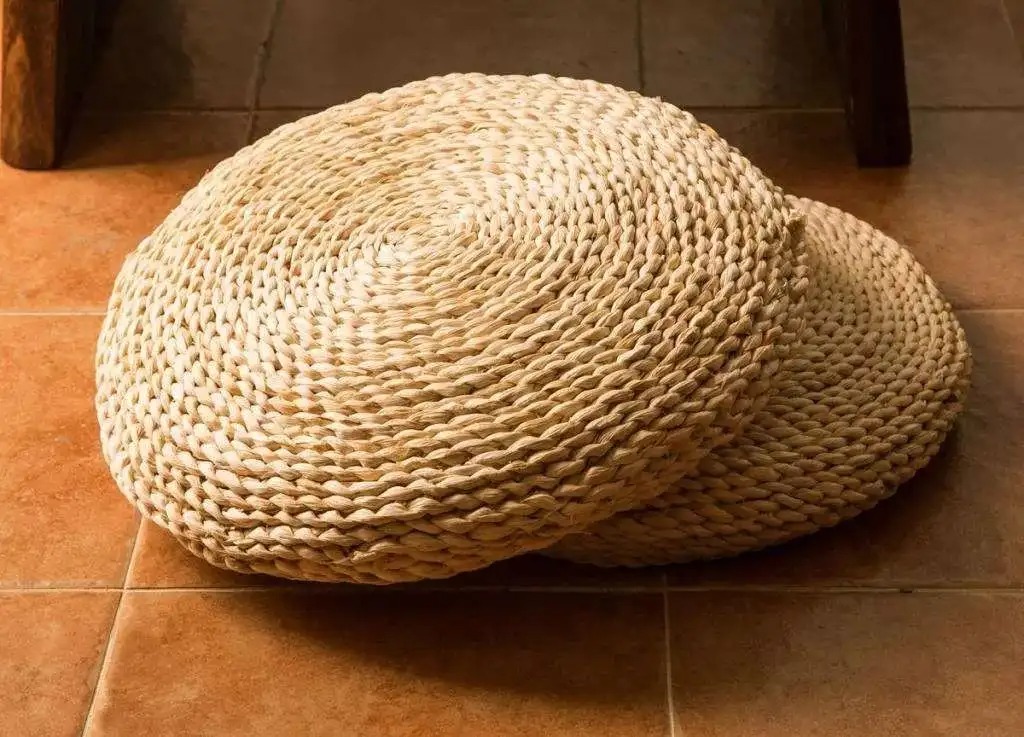
Cattail is a native plant. There are more than 10 kinds of cattail, most of which are produced in the north and northeast. It has been used as early as the pre-Qin period. The leaves are used for weaving, rope making, etc. The seats used by ancient princes in sacrifices were thickened with coarse cattail leaves on the bottom and woven with finer wan grass on the top. Ordinary people also often harvest cattail to make "cattail mats", "cattail cushions", "cattail balls", "cattail cushions" , etc. "Jiu Huai Zun Jia" mentioned: "Pull cattails and set up seats". The seats in the boat were woven with cattail.
【Pampas grass】
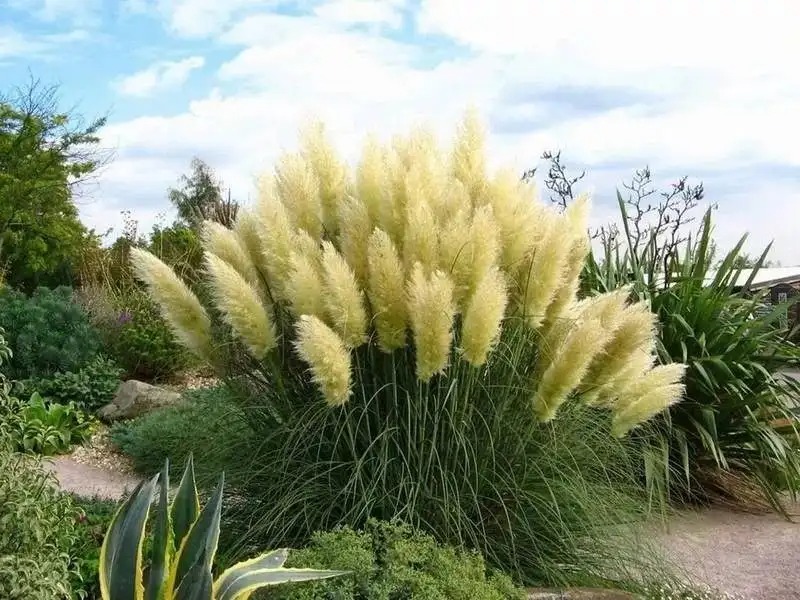
Cortaderia selloana is a perennial plant of the Poaceae family and the genus Cortaderia . It is dioecious. The culms are tall and strong, growing in clusters, 2-3 meters high. The stems are extremely narrow and drooping, with fine teeth on the edges, gray-green in color, and covered with short hairs. The leaves are hard, narrow, and clustered at the base of the culms. The panicles are large, silvery white to pink inflorescences. The spikelet axis nodes are densely covered with silky hairs, and the spikelets are composed of 2-3 flowers. The male spikes are wide and tower-shaped, sparse and weak. The flowering period is September-October. It is distributed in North China, Central China, South China, East China, and Northeast China.
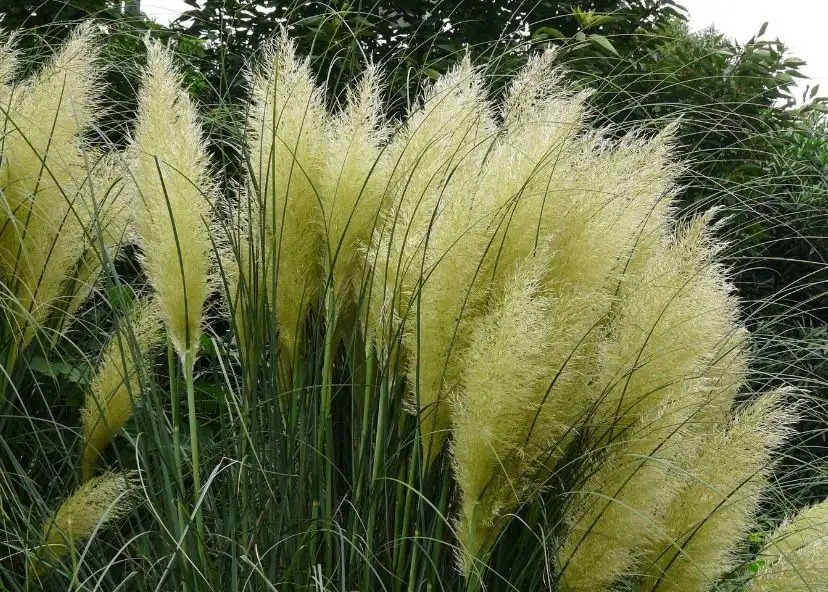
In ancient times, pampas grass was used to make ropes. In the famous Han Dynasty Yuefu "The Peacock Flies Southeast", there is a line "You should be like a rock, and I should be like a pampas grass. Pampas grass is as tough as silk, and a rock is immovable." This refers to pampas grass. In addition, pampas grass has long and beautiful flower spikes. It is spectacular and elegant to plant in the courtyard, or plant it on the shore in autumn to enjoy its silvery-white feathery panicles. In modern times, it is often used for garden landscaping.
【Gladiolus】
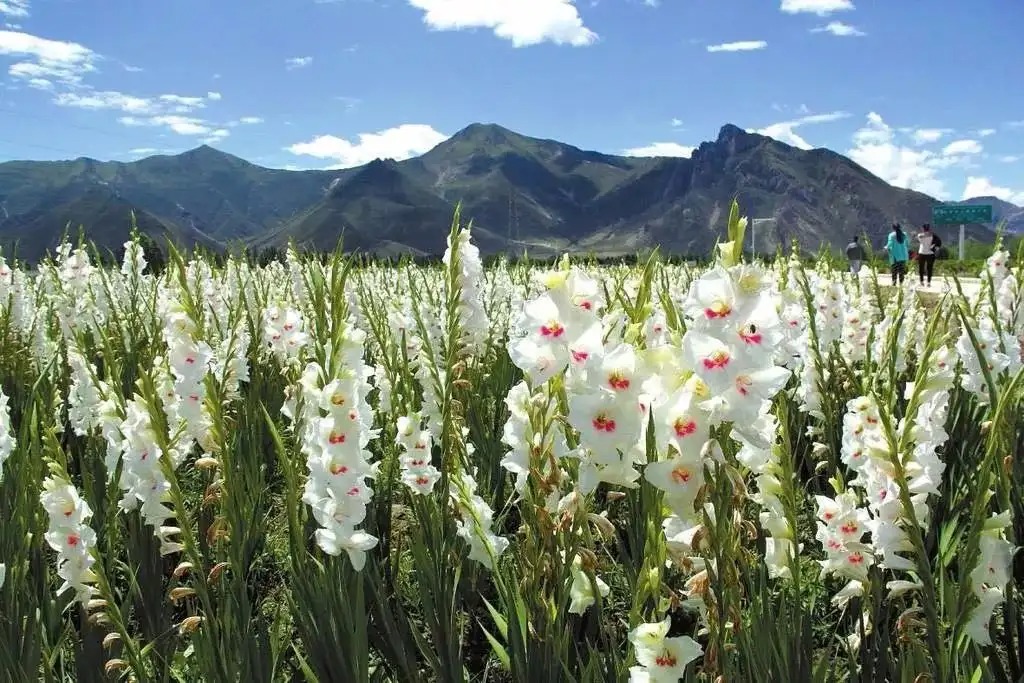
Gladiolus gandavensis Vaniot Houtt, also known as Gladiolus gandavensis, Gladiolus, and Water Chestnut Lotus, is a perennial herb of the Iridaceae family and the genus Gladiolus . The bulb is oblate and spherical, with brown or yellow-brown membranous covering on the outside; the leaves are basal or alternate at the base of the peduncle, sword-shaped, 40-60 cm long, 2-4 cm wide, sheath-shaped at the base, gradually pointed at the top, arranged in two rows in a mosaic manner, gray-green, with several longitudinal veins and a distinct and prominent midrib; the peduncle is erect, 50-80 cm high, unbranched, with several alternate leaves at the bottom of the peduncle; the scorpion-shaped monochasium inflorescence, each flower has 2 bracts under it, membranous, yellow-green, ovate or broad lanceolate, the flower is solitary in the bract, bilaterally symmetrical, and has colors such as red, yellow, white or pink; the capsule is elliptical or obovate; the seeds are flat and winged. The flowering period is from July to September, and the fruiting period is from August to October.
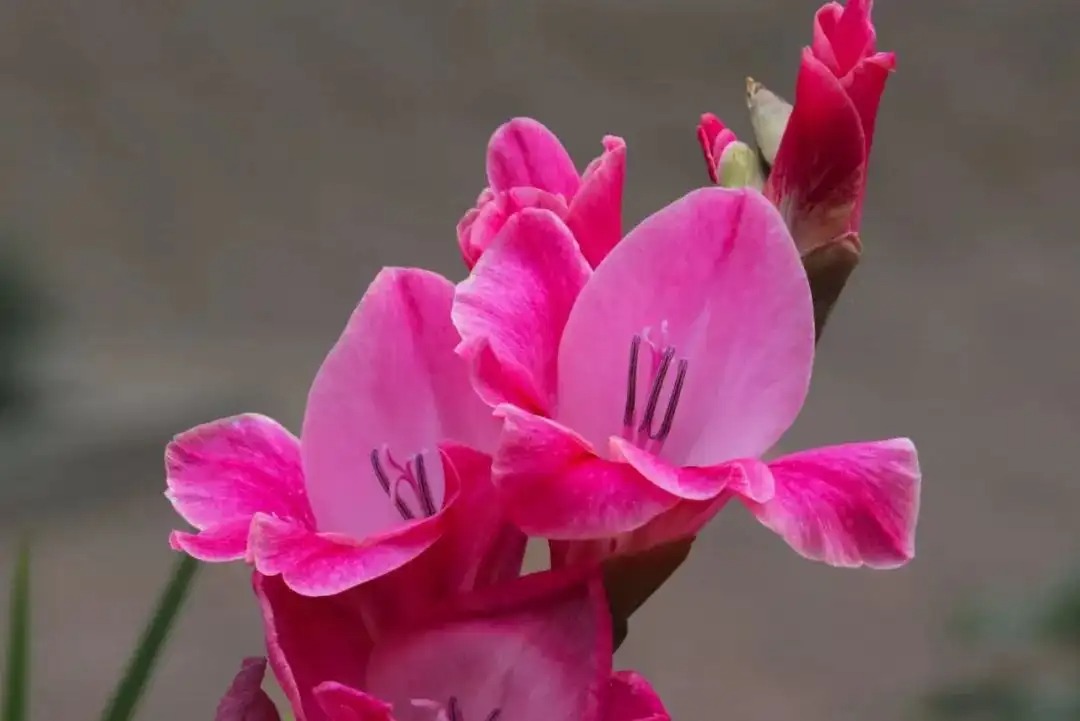
The name of gladiolus contains the characters "唐" and "菖蒲", but it is actually not related to the Tang Dynasty, nor is it calamus, and has nothing to do with it. Gladiolus is native to the Mediterranean, Central and South Africa, and the Middle East of Asia. After being introduced to Japan, it was named "gladiolus" because of its similar appearance to calamus and it was imported from other places. The "唐" in it means "foreign". It was introduced in the 1920s and 1930s, and the Japanese word "gladiolus" was directly used. In fact, it is not native to Japan.

Gladiolus can be used to make flower baskets, bouquets, vases, and flower borders and special flower beds. Dwarf varieties can be grown in potted plants for viewing. It is an important fresh cut flower variety in the world and is known as the "Four Major Cut Flowers in the World" along with cut roses, carnations and gerberas . There are now more than 8,000 varieties.
【Iris flower】
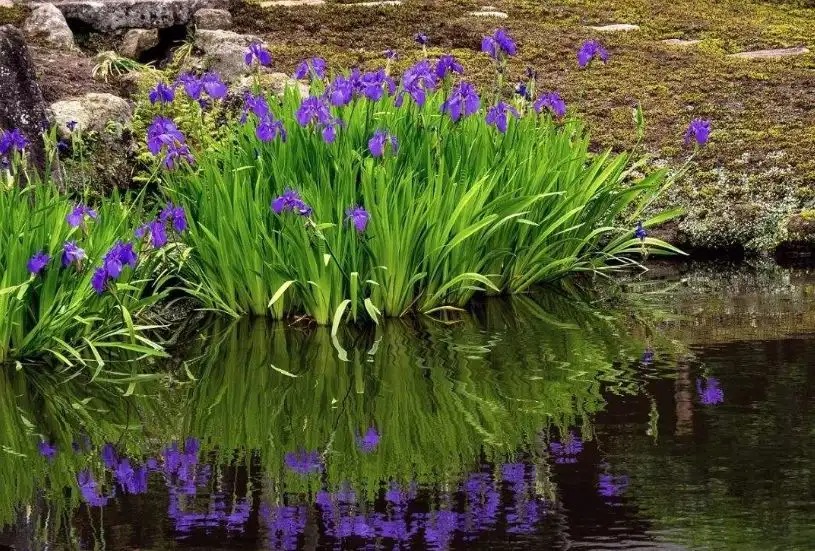
Acorus iris is also known as Iris ensata Thunb., purple iris, northeastern iris, and is a perennial herb of the Iridaceae family and the genus Iris .
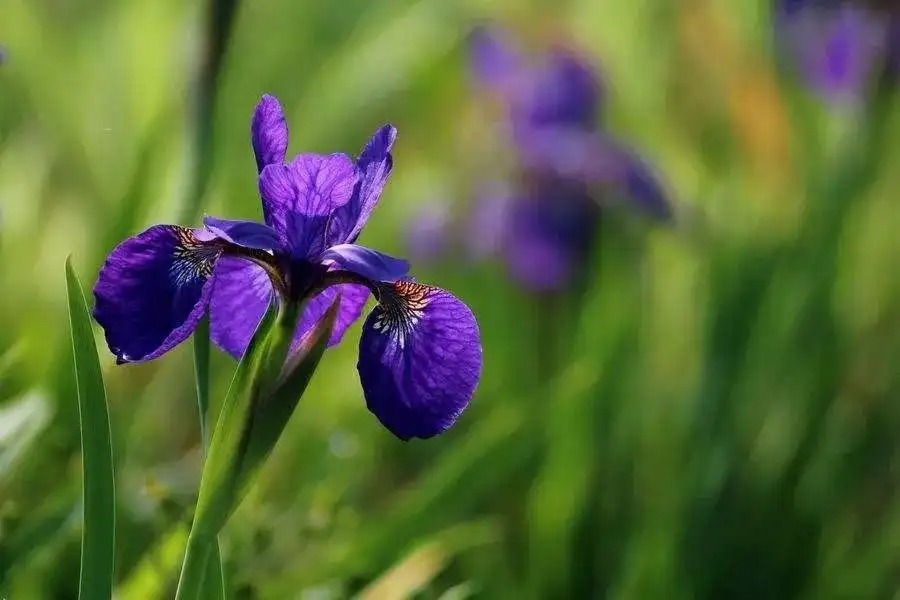
The base of the plant is surrounded by the remaining fibers of the leaf sheath. The rhizome is thick and oblique, and is covered with the remaining fibers of the brown leaf sheath. The fibrous roots are rope-shaped, grayish white, and have wrinkled horizontal stripes. The leaves are linear, with obvious midribs on both sides. The flower stem is cylindrical, solid, with 1-3 stem leaves; there are 3 bracts, which are nearly leathery and lanceolate, containing 2 flowers; the flowers are dark purple, 9-10 cm in diameter; the outer perianth lobes are obovate, and the inner perianth lobes are small, erect, narrowly lanceolate or wide strips. The capsule is oblong; the seeds are brown. The flowering period is June-July, and the fruiting period is August-September. It is distributed in Heilongjiang, Jilin, Liaoning, Shandong, Zhejiang and other places, and grows in swamps or wetlands on river banks.
[Iris]
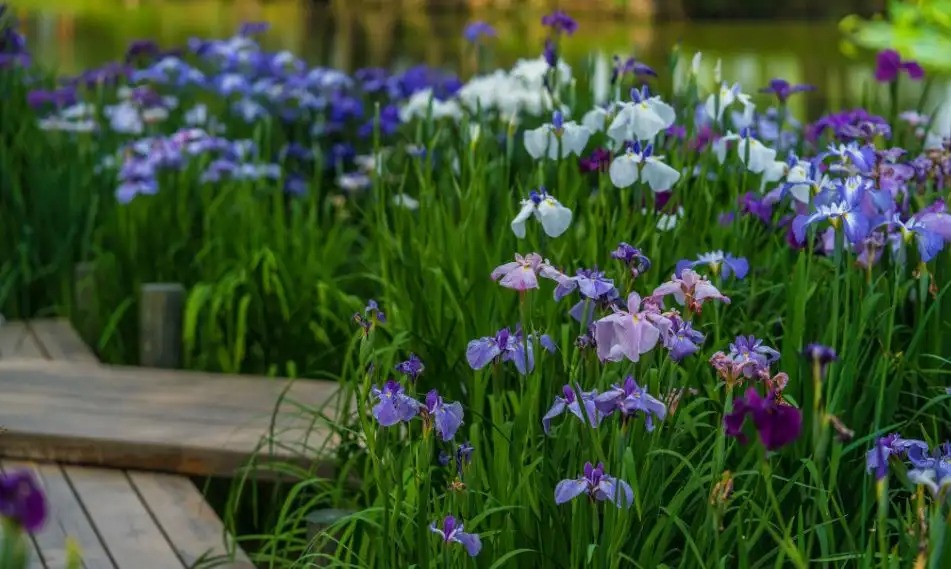
Iris ensata var. hortensis Makino et Nemoto is a variant of Iris ensata . It is a perennial aquatic flower with erect roots. The rhizome is short and thick, with many fibrous roots and fibrous dead leaf tips. The leaves are basal, linear, with a raised midrib and relatively flat veins on both sides. The scape is erect with 1-3 degenerate leaves. The flower can reach a maximum diameter of 15 cm. The three petals in the outer ring are elliptical to obovate, with yellow spots and purple stripes in the middle, and the upright petals are narrowly oblanceolate. The style has three branches, petal-shaped, and two-lobed at the top. The capsule is oblong, ridged, and the seed coat is brown-black. The flowering period is June-July, and the fruiting period is August-September. It is produced in Heilongjiang, Jilin, Liaoning, Shandong (Kunlun Mountains), Zhejiang (Changhua), and also in North Korea, South Korea, Japan and Russia.
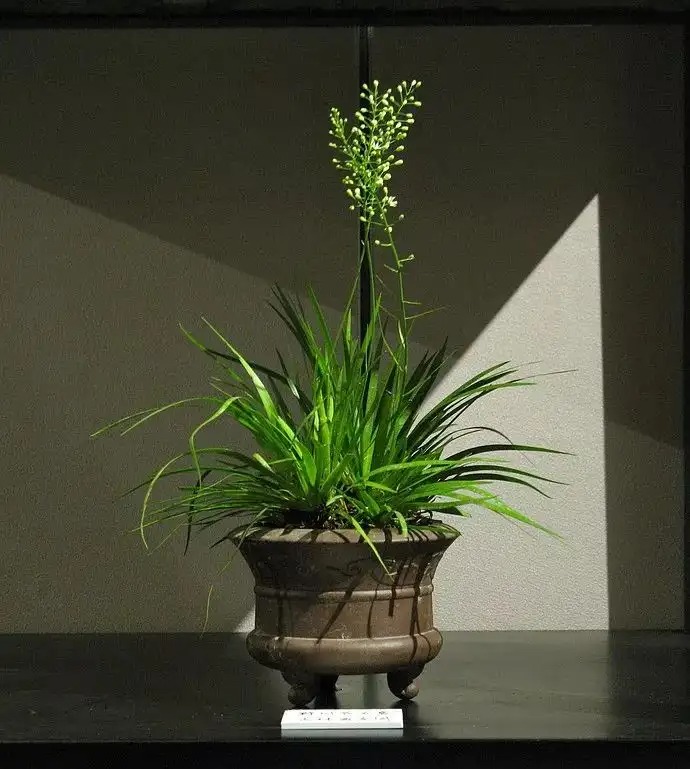
Iris is most widely cultivated in Japan, which has bred more than 100 horticultural varieties. Among the iris varieties cultivated in Japan and South Korea, they are also called iris and rock iris . Due to different place names, they are also called Yazhou flower stone iris and Halla flower stone iris . In fact, these are all horticultural varieties of iris. Although they are called stone iris and flower iris, they are not irises, but belong to the Iridaceae family. They are now often mixed with iris bonsai. In recent years, influenced by Japan and South Korea, we have introduced many iris varieties, and a small number of them often participate in iris exhibitions, so they are the easiest to confuse.
【Acorus calamus】
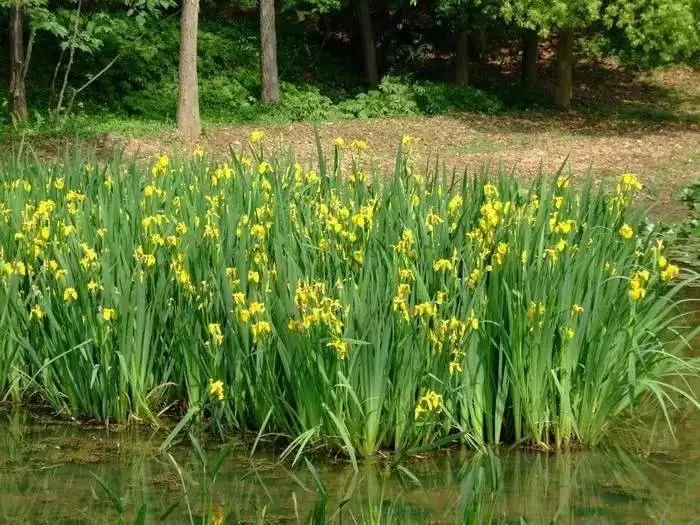
Garden iris, scientific name: yellow iris (scientific name: Iris pseudacorus L.), is a perennial wetland or water-borne herbaceous plant of the Iridaceae family and the genus Iris. The plant is tall with short and thick rhizomes; the leaves are dense, basal, green, long sword-shaped, 60-100 cm long, with obvious midribs and transverse reticulate veins; the flower stem is slightly higher than the leaves, the upper part of the hanging petals is oblong, the base is nearly equal in width, with brown spots or none, the standard petal is light yellow, and the flower diameter is 8 cm; the capsule is long, with many seeds, the seeds are brown and angular. The flowering period is May-June. It is native to Europe and is commonly cultivated in various places. It likes to grow in wetlands or swamps along rivers and lakes.
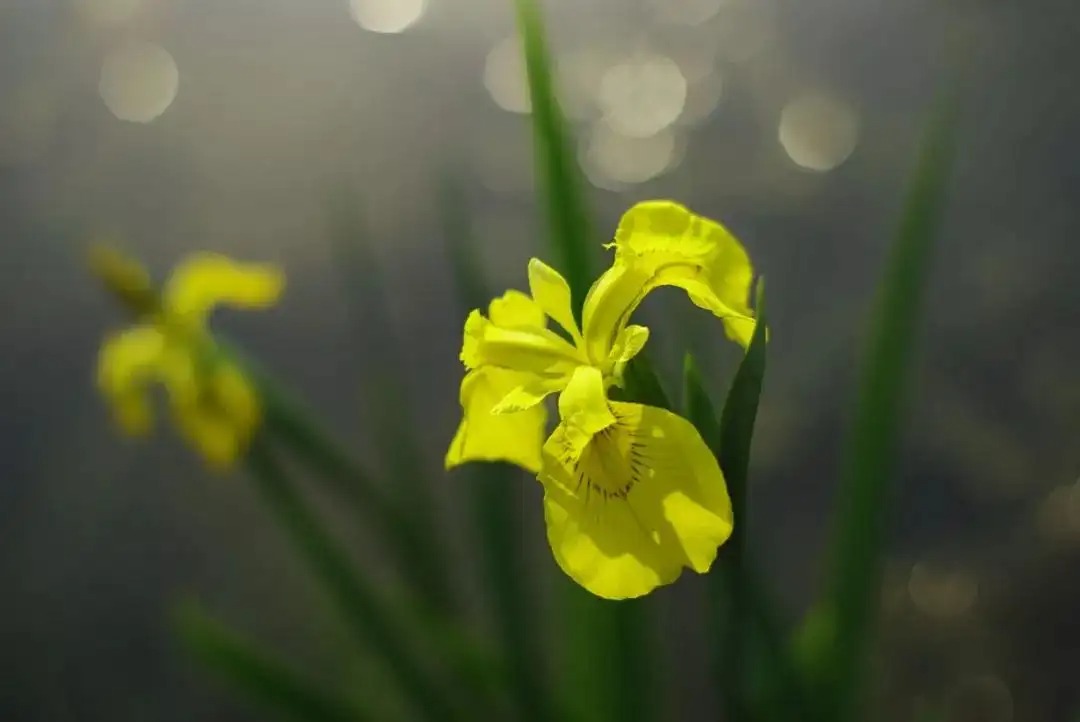
Iris pumila
The above is an introduction to common plants with the word "calamus". Among them, the nine-section calamus is different in ancient and modern times. In ancient times, it referred to the stone calamus , and in modern times it refers to the rhizome of Altai anemone ; Cattail is most easily confused with water calamus. There are pseudostems growing on the roots of cattail, which are tender and delicious, called cattail, and the leaves are strip-shaped; the leaves of water calamus are sword-shaped and linear. In terms of distribution, cattail is mainly in the north, while water calamus is mainly in the south.
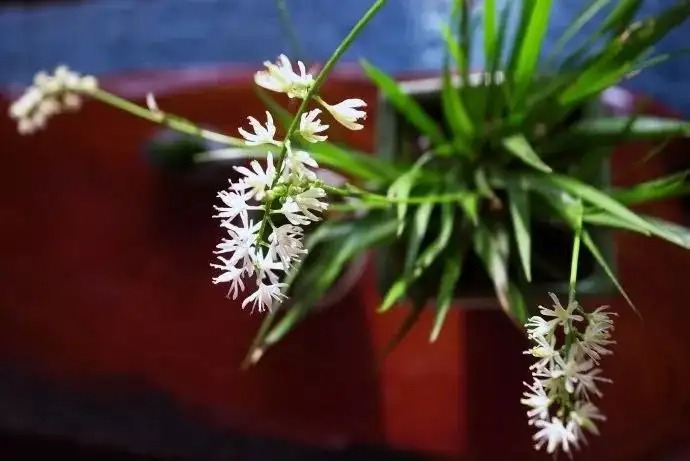
The many calamuses of the Iridaceae family originated from the "Chinese names" in Japanese botany used when they were introduced. They are not traditional calamuses. In fact, they are very easy to distinguish. The leaves of the Iridaceae family have no smell. When not in bloom, their shape is very similar to calamus. Pinch a leaf and smell it. If it has a fragrance, it is calamus. If it has no smell, it is iris.
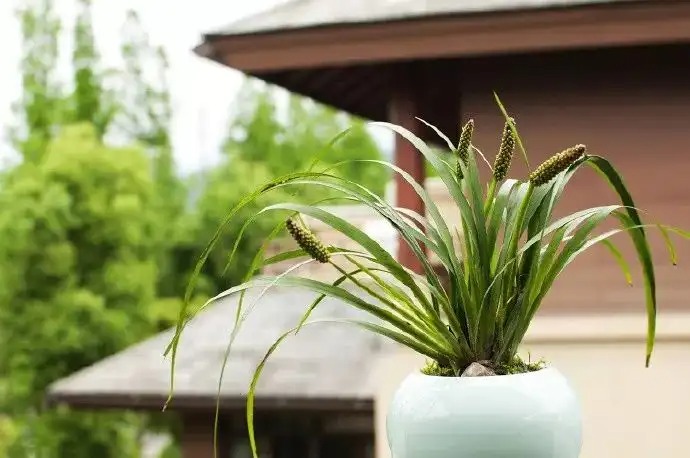
Due to space limitations, this article only introduces this much. For other detailed introductions about Acorus calamus, the author has written many articles. If you are interested, you can read further. Thank you!
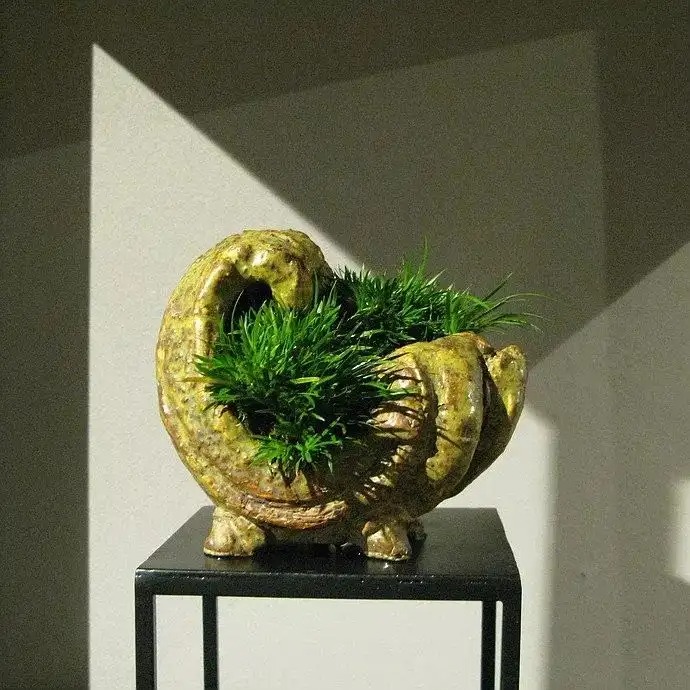
2019-8-16Easy Flower Wood
Yihuademu ( yihuademu) (Service Account)
Yihuademu ( yihua-demu) (reading number)
